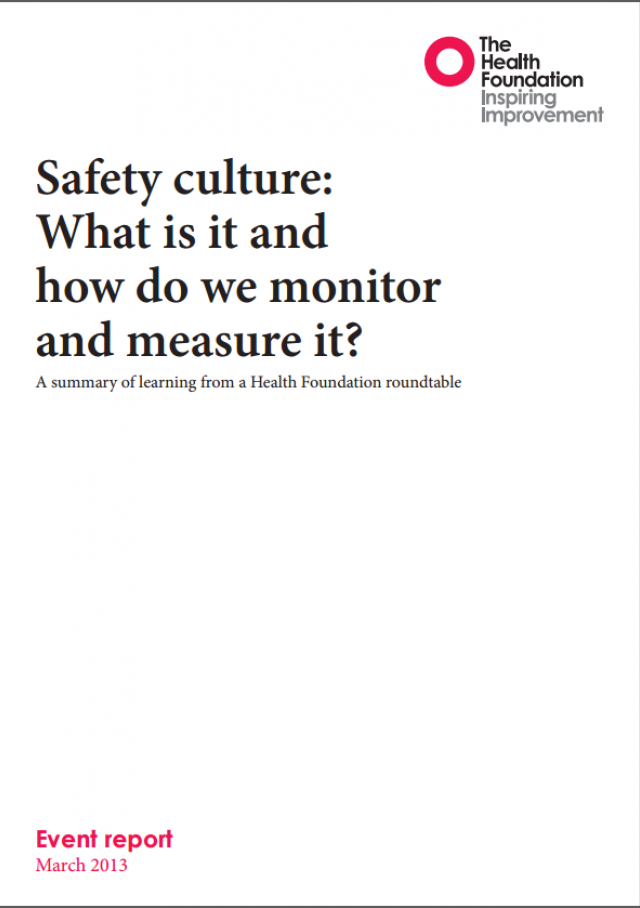Safety culture: What is it and how do we monitor and measure it? A summary of learning from a Health Foundation roundtable
March 2013

Key points
- In the absence of a strong evidence base that describes the mechanism by which culture directly affects outcomes, safety culture is best seen as a precondition for change rather than an agent of change.
- Understanding of safety culture can vary between the frontline, management and executive levels of a healthcare organisation.
- Safety culture and climate assessment tools provide a practical device for stimulating conversations among staff – the creation of ‘safe spaces’ can help to surface safety issues. However, the temptation to impose the use of these tools for performance measurement or compliance purposes must be avoided.
We hosted a roundtable event to discuss what is understood as ‘safety culture’, why it is important and how it can be measured and monitored. This roundtable was held as part of the Health Foundation's work to lead a step-change in thinking about patient safety.
Patient safety experts from academia, public policy, quality improvement and frontline care came together to share their knowledge and learning in order to build understanding in this area, and to recommend some practical next steps. This event report summarises the discussion and identifies themes that should be explored further.
Further reading
Work with us
We look for talented and passionate individuals as everyone at the Health Foundation has an important role to play.
View current vacanciesThe Q community
Q is an initiative connecting people with improvement expertise across the UK.
Find out more

